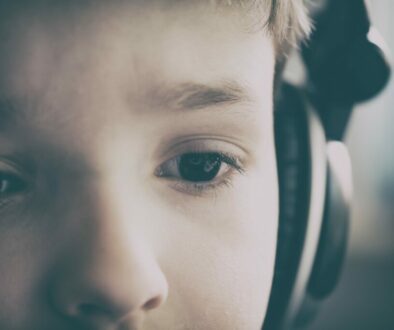Sensory Processing Disorder vs Autism: What’s the Difference?
The toddler in the doctor’s waiting room screams any time someone’s cell phone rings. The child is also compelled to touch seemingly every object in the room.
Does the child have sensory processing disorder or autism spectrum disorder? It can be difficult to tell. That’s why the child’s family is at the doctor’s office. They want answers.
Let’s examine sensory processing disorder vs autism.
SPD and ASD share enough neurological symptoms that they generally require professionals to accurately distinguish between them. However, there are some notable differences. It becomes much easier to recognize the two disorders if you focus on the mandatory traits that must be persistently present to meet the accepted diagnostic criteria for each.
First, let’s look at what they have in common.
Similarities Between SPD and ASD
A diagnosis of SPD means the brain fails to consistently process and react appropriately to the stimuli it encounters. The brain can also struggle to distinguish which sensory system is sending the data to the brain.
The body’s sensory systems include those responsible for seeing, hearing, touch, taste, and smell. It also includes the vestibular, proprioceptive, and interoception systems which help us monitor and navigate our bodies through space.
Interestingly, individuals with ASD often evidence symptoms of SPD. They, too, may respond inappropriately to sounds, lights, or other stimuli. That’s what makes a diagnosis challenging.
Differences Between SPD and ASD
Despite their similarities, SPD and ASD also stand apart when it comes to sensory processing. How so?
A medical professional can only make a diagnosis of SPD if the person is having trouble processing sensory input. But there doesn’t have to be sensory processing issues present in a person for a diagnosis of ASD. They could be there, but it’s not necessary.
How ASD Can Look Like SPD
Those with ASD may exhibit behavior and use treatments reminiscent of those used by people with SPD. For example, loud noises can be upsetting to someone with either neurological condition. A standard treatment in both cases is noise-canceling headphones.
The confusion between the two conditions often starts in childhood. In either case, there may be early signs of developmental delay and intellectual challenges.
Complicating the matter further, both SPD and ASD can be accompanied by other medical issues. Those distinct health problems could have symptoms identical or similar to either SPD or ASD.
The symptomatic similarities may make it initially appear that a child with SPD also has ASD when they actually have SPD plus another condition. Likewise, children with ASD may also seem to have SPD when it’s another undiagnosed medical condition causing the additional symptoms.
Separating ASD From SPD
A diagnosis of autism means the diagnostician has recognized and documented certain tell-tale behavioral characteristics that must be present for an accurate diagnosis. The child must show persistent trouble understanding social cues, communicating, and interacting with others.
The child must also be deficient in interpreting nonverbal signals such as facial expressions. Poor social interaction will also be obvious as the child with ASD will struggle to establish and maintain relationships.
There will also be repetitive behaviors and restricted actions. For example, the child may insist that routines not be altered. And it’s not uncommon for children with autism to show an overwhelming interest in a narrowly focused field of interest.
How Doctors Determine Autism
The medical community has not been able to definitely cite the cause of any of the various types of autism. Genetics, the environment, and prescription drugs have all been considered.
If an autism cause were known, diagnosis would be much simpler. The doctor could inquire about the child’s possible exposure to the cause. If there were exposure, the doctor could feel comfortable more quickly diagnosing the condition as autism.
Because there isn’t a recognized medical test for autism, a doctor would focus on the child’s development as compared to other children. In general, children tend to develop deep connections with their parents at an early age. This is followed by relationships with other adults as well as other children.
So, a doctor would be concerned if the child lagged behind in the ability to effectively communicate and socialize with others. The behavior would have to be persistent. In other words, it couldn’t be dismissed as temporary moodiness or due to mental health issues.
A medical practitioner would also try to rule out other causes for the slow development. For example, if a child were consistently slow to respond to verbal communication or didn’t respond at all, the doctor would likely test for hearing loss.
How Doctors Determine SPD
Sensory processing disorder is an impairment in which the brain incorrectly understands the data it receives from the body and the surrounding world. People with SPD may appear to others as socially maladjusted because of the way they strongly react to uncomfortable sensory information.
The sensory information might be in the form of something the child touched, smelled, tasted, heard, or saw. It could also involve data from the body’s vestibular function, proprioception, and interoception.
Vestibular function refers to the cooperation between the brain and the inner ear to keep a person balanced. It’s also the function that makes it possible to walk through a crowded room without bumping into people or objects. A person with impaired vestibular function may appear awkward and uncoordinated.
Proprioception relates to the brain being aware of what the body is doing. A child with proprioception issues could move a body part without the brain registering the event.
Interoception deals with the brain’s ability to monitor what’s taking place internally. Proper interoception helps us to recognize when we’re thirsty. It also plays a key role in our understanding of whether the object we’re touching is hot or cold.
The Predictable Overlap of SPD and ASD
You may recognize many of the above behavior patterns of SPD in a child with autism. Studies reveal the presence of SPD in a high percentage of children with autism. That’s why it takes a medical professional to determine the likely reason for the children’s hypersensitivity or hyposensitivity to sensory information.
Two children of the same age may both cringe at bright light or avoid being touched, but the underlying conditions are different. One has SPD while the other has ASD.
Two other children may both be driven to touch objects while also giving evidence of a higher-than-normal pain tolerance. Yet, they too may have different diagnoses.
Remember that the key differentiation between SPD and ASD is the presence of ASD-specific behaviors. These include poor social communication, ineffective social interaction, a propensity for repetitive actions, and a possible fascination with a specific object or subject.
Get Help Understanding Sensory Processing Disorder vs Autism
Are you concerned about your child’s behavioral health and development? Do you have additional questions about sensory processing disorder vs autism? Finding answers can give you peace of mind as you learn the most effective way to assist your child.
Since 2000, we’ve helped parents and their children in Texas better understand autism. If you’d like to discuss your family’s neurological challenges, contact Developmental Pediatrics today.



